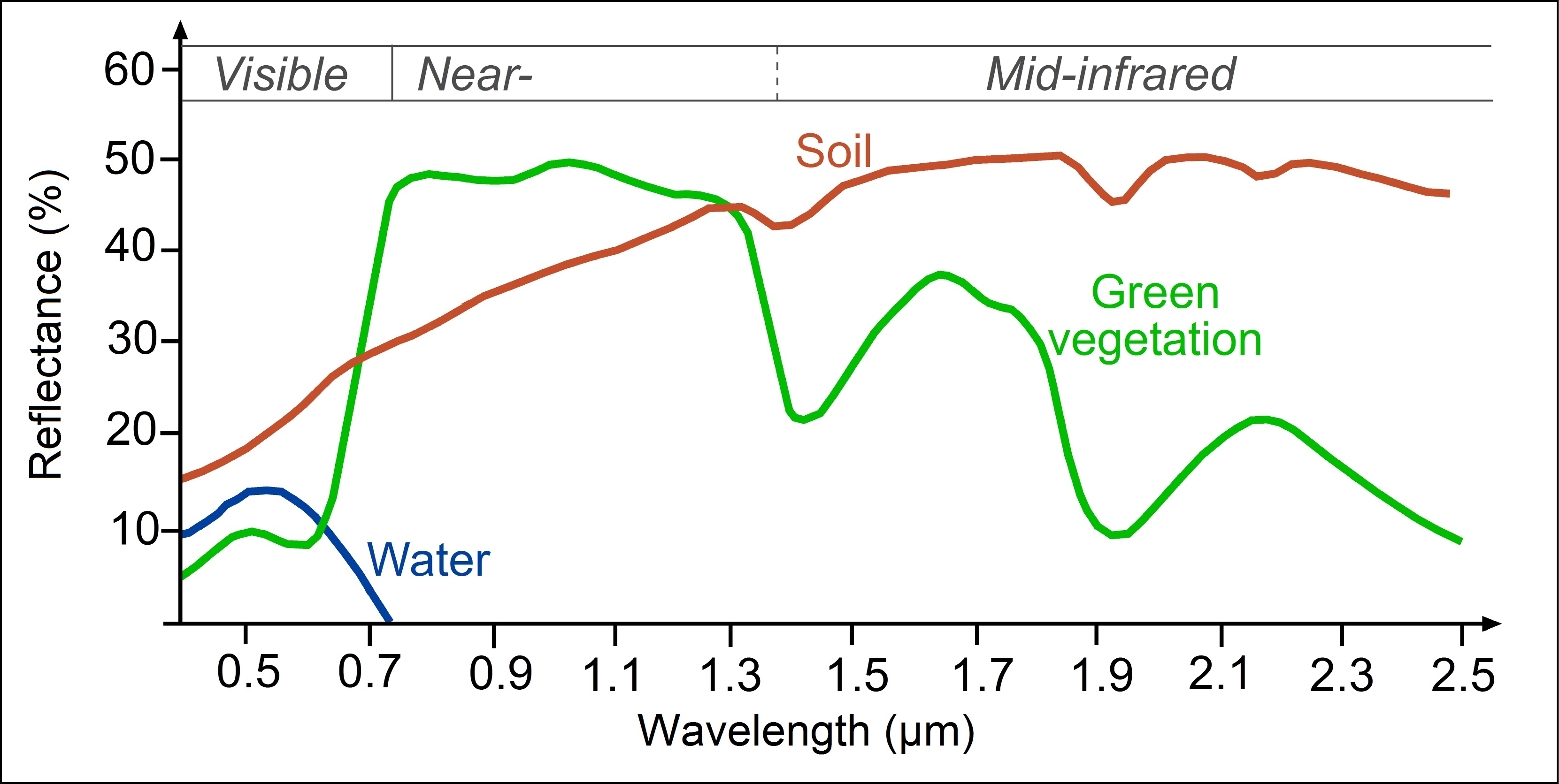Physical background
Distinguishing clouds by their thickness and cloud top temperature
Cloud RGB images contain information on cloud optical thickness and cloud top temperature.
In cloudy areas the VIS0.63 and NIR0.87 channel values depend mainly on the thickness of the clouds. Their reflectivity values are high for opaque and lower for semi-transparent clouds.
The IR10.8 channel distinguishes thick clouds by to their cloud top temperatures. IR10.8 is an atmospheric window channel (where the absorption of the gas molecules is low). For opaque clouds the measured signal depends mainly on cloud top temperature. For semi-transparent clouds the interpretation of the measured radiation is more complicated and depends on the cloud's transparency and the temperature of the underlying surface in addition to the cloud's own temperature.
Distinguishing cloud-free areas with different green vegetation fractions
The NIR0.87 and VIS0.63 channels together provide vegetation information. The reason is demonstrated in Fig. 1: the reflectivity of green vegetation differs considerably in the two channels. More green in a Cloud RGB means that the pixel is covered by vegetation containing more chlorophyll.
Figure 1: Typical reflectivity functions of green vegetation and bare soil (green and brown curves) in the shortwave spectral region
